NASA’s ShadowCam Sheds Light on Moon’s Darkest Regions
![]()
NASA has released incredible new images of the shadowy region of the Moon’s south pole. The detailed photos were captured by NASA’s impressive ShadowCam instrument.
As NASA enjoys the success of its Artemis I mission and looks ahead to Artemis II, the space agency is making continued progress toward humanity’s return to the Moon in Artemis III. That mission will represent humankind’s first journey to the lunar south pole region, and ShadowCam is performing critical reconnaissance of the unexplored area.
ShadowCam can operate in extremely low-light conditions, enabling it to capture the amazing photos of the lunar surface. The camera is about 200 times more sensitive than the Lunar Reconnaissance Orbiter Narrow Angle Camera.
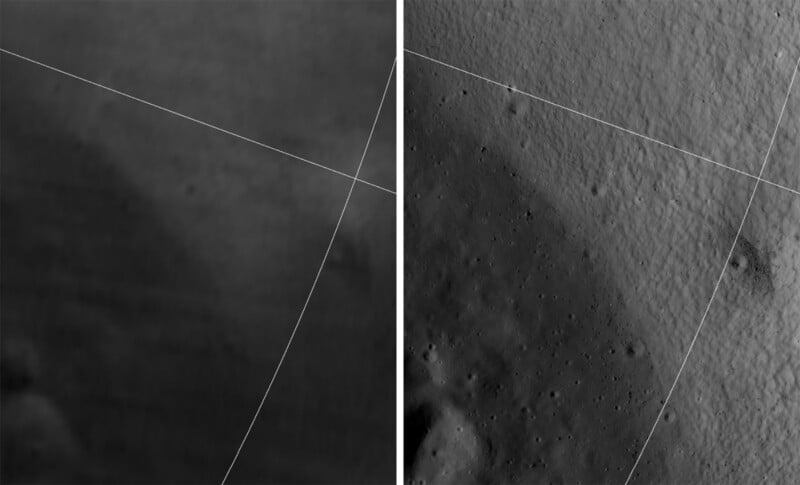
Developed by Malin Space Science Systems and Arizona State University (ASU), ShadowCam has 12-micrometer pixels that allow it to capture more light and produce detailed photos in low-light conditions. The camera uses a 699mm f/3.6 Cassegrain (Richey-Chretien) optic and its primary mirror is 195 millimeters in diameter. Each pixel in ShadowCam’s images represents about 1.7 meters.
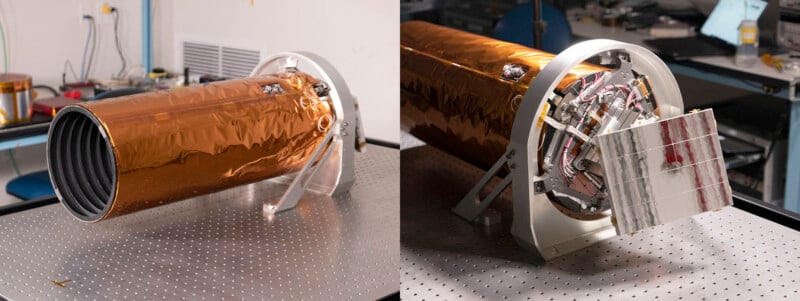
ShadowCam and five Korean instruments are aboard the Korea Aerospace Research Institute’s (KARI) Korea Pathfinder Lunar Orbiter (KPLO). The lunar orbiter, also known as Danuri, launched in August 2022 and entered the Moon’s orbit last December. Since entering lunar orbit, ShadowCam has routinely captured images of the Moon’s polar regions.
One of ShadowCam’s first images was of Shackleton Crater near the lunar south pole. In the image below, the arrow points toward the track of a boulder that rolled down the crater’s wall. “The observation of these trails helps scientists characterize the boulder shape and velocity and regolith features, furthering our understanding of the geotechnical properties of the Moon,” NASA explains.
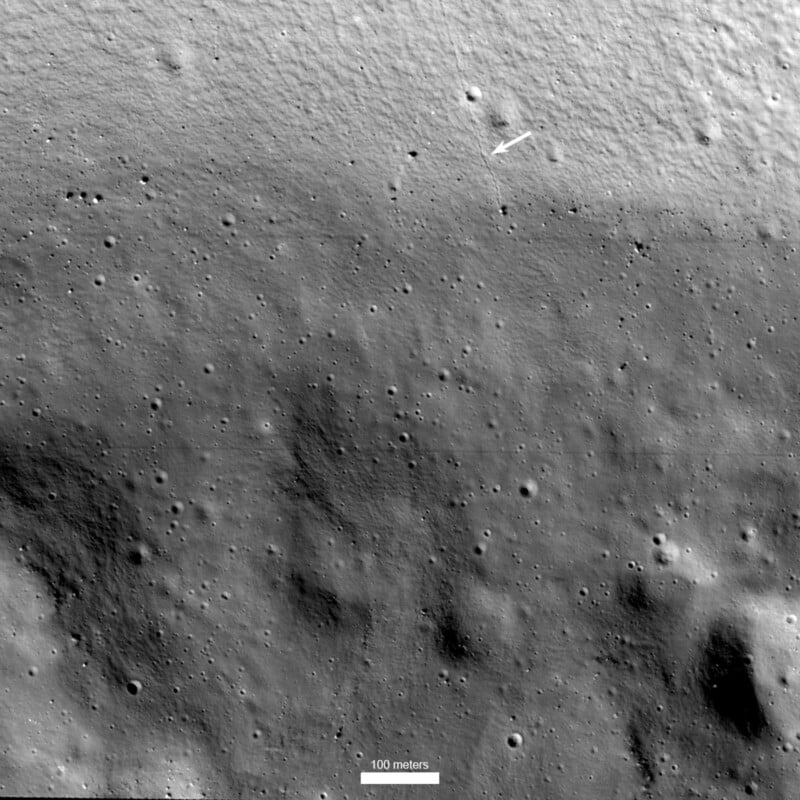
Although ShadowCam has been meticulously crafted to deliver detailed images in extremely low-light conditions, the camera has also taken photos under Earthshine conditions. The test shot reveals the interior of Bruce Crater and the results of soil sliding down the crater’s walls.
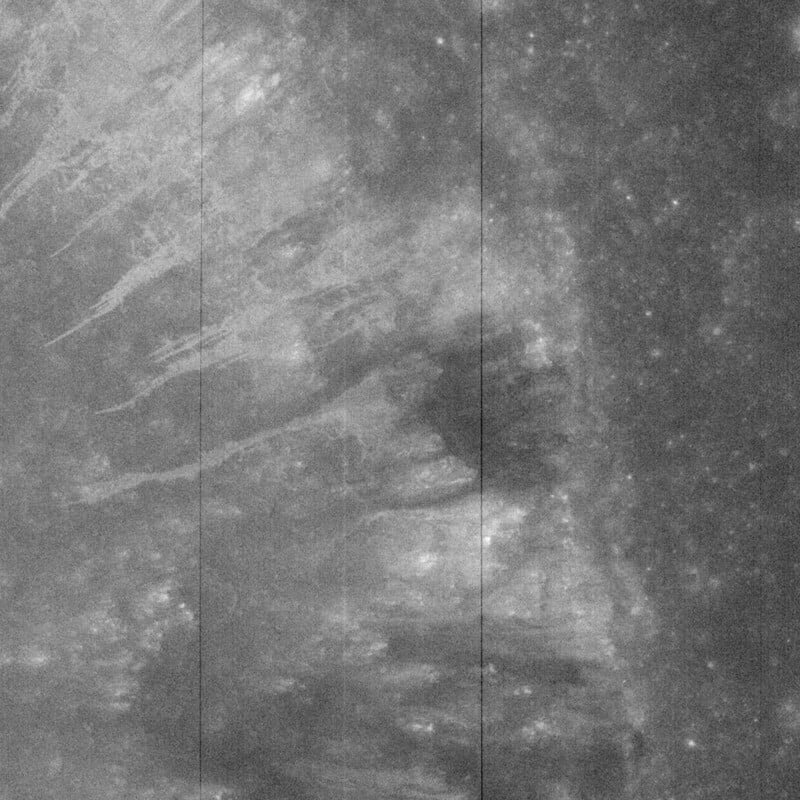
Beyond Earthshine, another type of secondary lighting allows ShadowCam to capture images of parts of the Moon that do not receive direct sunlight. The second type is the illumination from sunlight reflected off nearby geologic features, “such as mountains and crater walls at the poles that rise high enough above the surface to reflect direct sunlight.”
The image below showcases this type of illumination and features the rim of Marvin Crater, which is about 16 miles (26 kilometers) from the south pole.
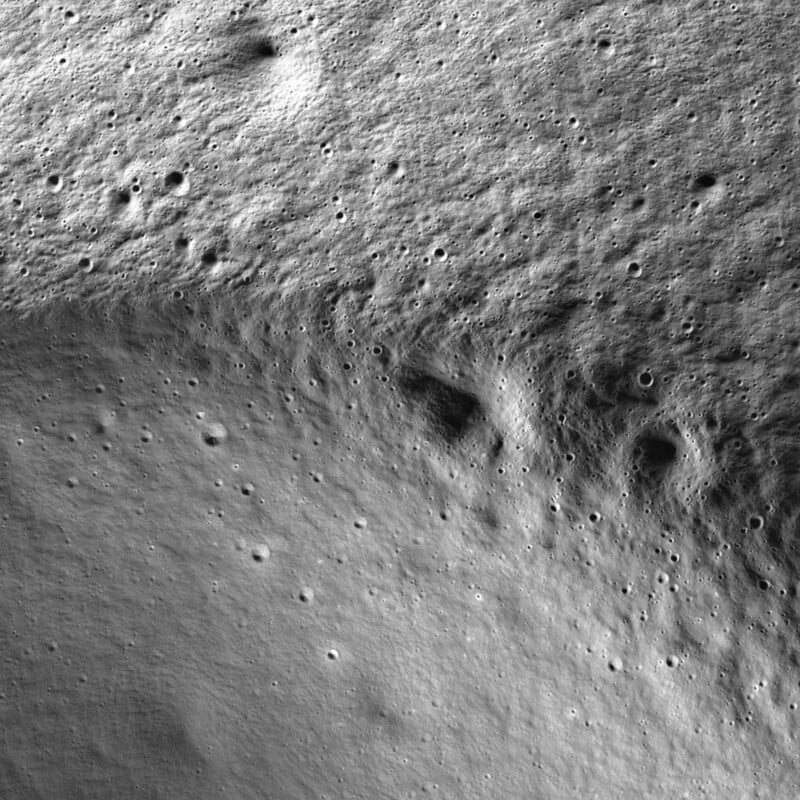
Another earthshine-illuminated image shows the Aristarchus Crater’s central peak, shown along the left edge of the frame. The different tones in the central peak in the image
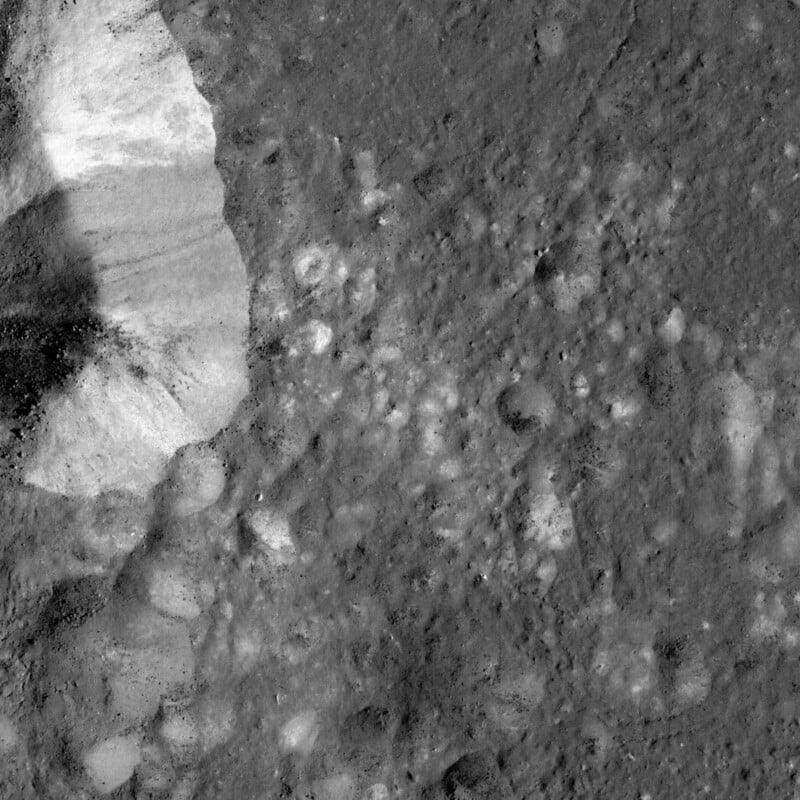
“ShadowCam will not be able to image Artemis astronauts walking on the surface of the Moon if they are in direct sunlight because the powerful light would render the images saturated. This image, however, shows that it may be possible using Earthshine, if astronauts are spacewalking during lunar night,” NASA explains.
Image credits: NASA/KARI/ASU